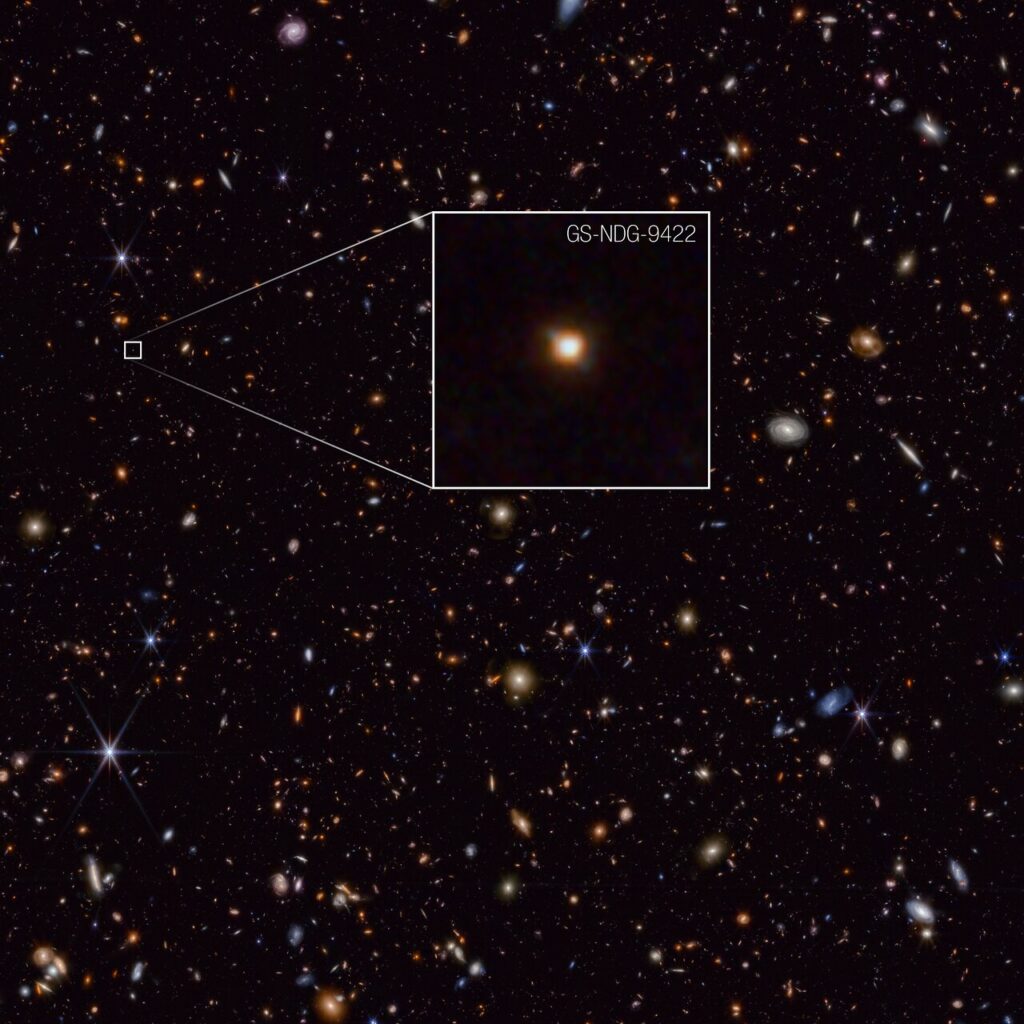The James Webb Telescope has discovered a very unusual galaxy with gas clouds overshadowing the stars. According to the researchers, it may be the missing link in galactic evolution.

The galaxy under study is known as GS-NDG-9422. It’s located at the edge of the observable Universe. We see it as it was just a billion years after the Big Bang.
GS-NDG-9422 interested scientists with its anomalous spectrum: it didn’t glow the way it was supposed to. With the help of computer simulation, the researchers found the answer. The stars inside GS-NDG-9422 heated the surrounding gas clouds so much that they began to glow brighter than themselves. According to scientists, GS-NDG-9422 has luminaries with temperatures exceeding 80,000 degrees Celsius. By comparison, typical hot massive stars in our local Universe have temperatures between 40,000 and 50,000 degrees Celsius.
This difference is because the Universe itself was different at the time GS-NDG-9422 existed. The researchers suggest that the galaxy is in the middle of a short phase of intense star formation, when a large number of massive hot stars are born inside a cloud of dense gas. The cloud receives so many photons of light from stars that it glows very brightly.
The finding is interesting because the phenomenon of gas outshining stars has previously been predicted for stars of Population III. This term refers to the very first luminaries in the Universe, which formed immediately after the Big Bang. They were composed entirely of primary hydrogen and helium and were much brighter and more massive than today’s stars.
We know that there are no Population III stars in GS-NDG-9422 because the JWST data show too high content of elements heavier than helium. However, its stars are still noticeably different from what we are used to. According to scientists, they could be a benchmark for better understanding how galaxies made the transition from primordial luminaries to the types we already know.
We previously told you about a galaxy in the early Universe that was left without fuel because of a black hole.
According to Esawebb


